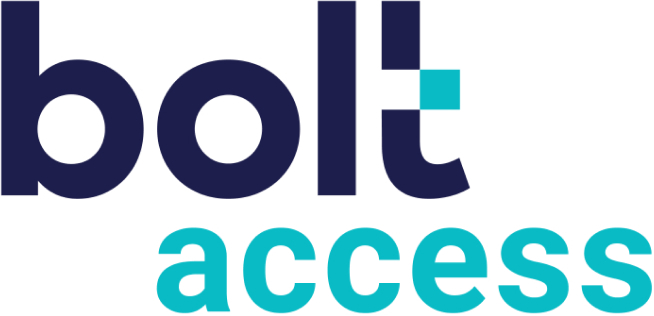
"Successful companies don’t happen by chance. There’s a lot of planning and preparation that goes in, where business owners gain a clear understanding of key opportunities and challenges. And this is certainly true for independent agents. Those that rise to the top usually perform extensive market research for an all-encompassing vantage point before entering a new market. In fact, market research supplies you with the critical information needed to thrive in the insurance industry, according to BizzBee Solutions. It helps you better understand your customers, identify primary competitors and fuels business growth. Here’s how to conduct step-by-step market research for small, 1-5 person independent agencies.
The Process
“Market research is the process of examining an industry’s buyers, the product these buyers want, and where they’re currently getting it,” Braden Becker, senior writer at HubSpot, explains. “By engaging the right people and data, a business can use this research to position itself in the market and predict where the market will go in the future.” The exact process of performing market research can vary slightly depending on who you ask. But according to marketing consultant Brooke Tomasetti, there are five main steps that apply across the board.
1. Identify the Problem
What are the pain points your customers are facing? What’s the common thread between them? These are critical questions to ask because they help you understand the central issues your demographic is dealing with as well as potential solutions. Maybe your insurance business is based in a flood-prone area, yet only a fraction of homeowners have flood insurance. In this case, the problem would be to educate individuals and let them know that basic homeowners insurance doesn’t cover flooding. The opportunity would lie in the potential to become a leading independent agent that provides flood insurance in your area.
2. Create a Market Research Plan
The methods in which you obtain data and their effectiveness is essential for generating strong market research, Gigi Devault at The Balance writes. This requires its own unique process, which Devault breaks down into four steps:
- Define your target audience.
- Determine the sample size.
- Decide how you will generate data.
- Contact participants and gain their consent.
There are several ways to gather data. One of the most straightforward is to interview existing customers. You can create surveys on tools like SurveyMonkey where you ask specific questions and send them to email subscribers and social media followers. You can also use free marketing research websites to learn more about your customers and their needs. There are several useful sites, says Kim Kosaka, Alexa marketing director. These include US Census Data Tools, Statista, Pew Research Center and Google Surveys.
3. Generate Data
The way in which you ask questions makes a difference to the kind of responses you’ll get. “When collecting data, make sure it’s valid and unbiased,” Tomasetti points out. “You would never ask a research interviewee, ‘You think that we should offer a higher pricing tier with additional services, correct?’” If you do asking leading questions, you can influence the interviewee to respond in a certain way, reducing the objectivity and quality of your data. That’s why Tomasetti recommends sticking with a mix of open-ended and closed-ended questions as well as multiple choice.
4. Analyze the Data
Now it’s simply a matter of going over your data and looking for trends and patterns. The purpose is to pinpoint legitimately useful information from your data sets in order to gain insights, explains DJS Research. Once core information is extracted, it can be summarized and presented it in a way that is valuable to your mission.
5. Build a Strategy Around Your Findings
Finally, it’s time to put your findings into action. Director of Insights at Branded Research Kristin Miles says that what you unearth will impact your overall approach and decision making. Everything from insurance coverage product messaging, marketing strategies and lead nurturing will hinge upon your findings. Now that we have a basic understanding of the underlying market research process, here are some specific elements independent agents will want to look at.
Demographics
You need to know who you’re selling to and one of the best ways to understand your demographics is to construct buyer personas, says HubSpot’s marketing director Debbie Farese. Specific characteristics to look at include age, gender, location, income and major challenges. Messaging strategist Jennifer Havice has an in-depth guide on the process behind creating customer personas. It’s a great resource if you’re new to the concept and need help getting started.
Market Size
Having a clear understanding of market size has huge implications on your business, writes the team at lead generation platform Fieldbloom. Market size impacts your business strategy, growth tactics and long-term profitability, so it’s critical that you accurately measure it. “Census and labor bureau hold a lot of information, and most industries have formal associations which compile and track this type of data,” says entrepreneur Alejandro Cremades, author of “The Art of Startup Fundraising.” He adds that you can also buy studies or have research done on your behalf. Credible sources like these will give you a basic overview, from which you can calculate how much revenue the market made, he adds. This should in turn give you a good idea of what you’re working with and what type of demand there is.
Projected Growth
You’ll also need to factor in anticipated growth or decline over the next few years. Maybe current demand for a certain type of insurance isn’t overly impressive at the moment. But if that demand is predicted to spike over the next few years, there could be a huge payoff. You can usually determine projected growth by reviewing industry statistics and government research and also by reading local and industry-related news. For example, an independent agent considering expanding their products to flood insurance can look at recent statistics from FEMA and news reports like that from WYFF’s Tim Waller in Greenville, SC, in which he explains how interest in flood insurance has grown since Hurricane Florence.
Customer Needs
Ensuring your customers actually need a particular insurance product is arguably most important of all. After all, if there’s no demand, your initiatives are essentially pointless. Going back to the flood insurance example, you would want to confirm of a couple of things before offering this type of policy: Flooding would have to be a legitimate threat in your area; and a sizable portion of your demographic would lack flood insurance. But that’s just the tip of the iceberg. There are several ways to understand customer needs, including insight from service conversations with current customers and feedback via contact forms, social media and blog comments, writes Sven Ri at live chat software platform Userlike.com. Sites such as Quora and Reddit can be great for observing the collective needs of your demographic.
Competition
There were nearly 6,000 insurance companies in the US in 2016 according to the Insurance Information Institute. So independent agents face some immense competition — both with other small agencies as well with as large ones. Before entering a new market, you’ll want to know who your primary competitors are, their strengths and weaknesses and their marketing strategies. That’s where competition research comes in. Competition research lets you know what you’re up against so that you can win over a larger percentage of customers, says marketing and communications VP at Score Association, Bridget Weston Pollack. There are specific elements of competitor research you’ll want to focus on, according to the team at online entrepreneur training program Kaufmann FastTrac. These include:
- Company description, size and locations.
- Key managers.
- Types of insurance coverage they offer.
- Marketing and sales strategy.
- Differentiating factors from other insurance providers.
- Success rate.
- Potential threats to your strategy they may have.
- Opportunities where you can outperform them.
The goal is to synthesize the information so that you’re aware of the current state of your competition. Once you figure that out, you can build effective strategies around it.
Setting the Stage for Success
There’s ample room for growth for independent agents these days. Whether new to the industry or hoping to expand your existing business, scaling is certainly possible provided you know the market and legitimately understand what your customers are looking for. Putting the time and effort into market research, analyzing and acting on that information, greatly increases your odds of success. Images by: auremar/©123RF Stock Photo, dizanna/©123RF Stock Photo, StartupStockPhotos"
Talk to an expert
Contact us
